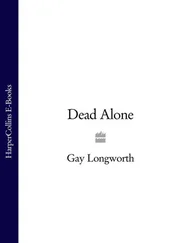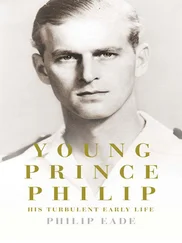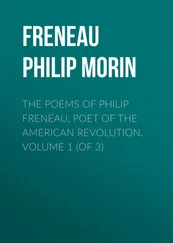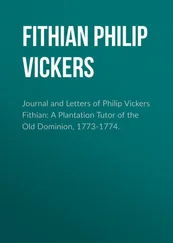3. Constantine VII Porphyrogenitus, De Administrando Imperio, ed. Gy. Moravcik and R. Jenkins (2 vols., London, 1962), section 9: ‘On the coming of the Russians in “monolykha”.’See also Franklin and Shepard, The Emergence of Rus’.
4. C. Mango, trans., The Homilies of Photius (Cambridge, Mass, 1958), pp. 95ff.
5. See Vernadsky’s chronology in his Ancient Russia, pp. 394-5; Franklin and Shepard, The Emergence of Rus’, p. 57.
6. M. McCormick, Origins of the European Economy: Communications and Commerce,A.D. 300—900 (Cambridge, Mass., 2001), pp. 610, 743, 760.
7. Christian, Russia, Central Asia and Mongolia, vol. 1, p. 342; Franklin and Shepard, The Emergence of Rus’, pp. 103-4; O. Pritsak, Origins of Rus’, vol. 1: Old Scandinavian Sources other than the Sagas (Cambridge, Mass., 1981), p. 583.
8. I have adapted this passage from the Laurentian Chronicle from the translation in Vernadsky et al., Source Book, vol. 1, pp. 22-3.
9. The account of Olga that precedes and follows is derived from several sources, including Ye. A. Kivlitskii, ‘Sv. Ol’ga [Helen]’, Entsiklopedicheskii slovar’ (Brockhaus-Efron), vol. 21A (St Petersburg, 1897), PP. 910-11, Barford, The Early Slavs, p. 147; Franklin and Shepard, The Emergence of Rus’, pp. 134-9.
10. For an account of taxation in Kievan Rus’, see G. Vernadsky, Kievan Russia (New Haven, 1948, repr. 1973), pp. 190-92.
11. I. Dubov, Voprosy istorii, 5 (1990), 15-17, translated in part in D. Kaiser and G. Marker, eds., Reinterpreting Russian History: Readings 860-1862 (New York, 1994), pp. 13-20. Dubov discusses the contributions of Vikings, Slavs and others to the development of society in the forest zone of central Russia.
12. See the translated excerpts from Ouranos and Liutprand in D. Geanakoplos, Byzantium: Church Society and Civilization seen through Contemporary Eyes (Chicago, 1984), pp. 112-13.
13. Yngvar’s saga, see Palsson and Edwards, Vikings in Russia, pp. 52, 55-6.
14. Constantine VII, De Administrando Imperio, section 9.
15. See Barford, The Early Slavs, p. 237.
16. Franklin and Shepard, The Emergence of Rus’, pp. 370—71.
17. A. Kazhdan and A. W. Epstein, Change in Byzantine Culture in the Eleventh and Twelfth Centuries (Berkeley, 1990), p. 81.
18. Constantine VII, Le Livre des cérémonies, ed. A. Vogt (Paris, 1935, 1939-40); Liutprand, Relatio de legatio Constantinopolitana, ed. J. Becker (Hanover and Leipzig, 1915); H. Evand and W. Wixom, eds., The Glory of Byzantium (New York, 1977); A. Kazhdan and M. McCormick, ‘The social world of the Byzantine courts’, in H. Maguire, ed., Byzantine Court Culture from 829 to 1209 (Washington, 1997), pp. 167-98.
19. I follow the interpretation in Kivlitskii, ‘Sv. Ol’ga [Helen]’, rather than Franklin and Shepard (The Emergence of Rus’, p. 137), who think that Olga was seeking legitimation for the new Russia from as many sources as possible. On the question of her baptism see G. Ostrogorsky, History of the Byzantine State (Oxford, 1980), p. 283, n. 1.
20. Another translation of this excerpt from the Laurentian Chronicle is to be found in Vernadsky et al., Source Book, vol. 1, p.25.
21. For example, the recurring refrain ‘Dunai, Dunai’ in historical songs about Stepan Razin.
22. Vernadsky, Kievan Russia, p. 42; Ostrogorsky, History of the Byzantine State, pp. 292-6.
23. Franklin and Shepard, The Emergence of Rus’, p. 163.
24. I. Sevcenko, Ukraine between East and West (Edmonton, 1996).
25. G. H. Hamilton, The Art and Architecture of Russia (Harmondsworth, 1954), pp. 10—14.
26. Pritsak, Origins of Rus’, vol. 1, p. 32.
27. F. Dvornik, ‘Byzantine political ideas in Kievan Russia’, Dumbarton Oaks Papers, 9-10 (1956), 76-94.
28. F. Dvornik, Byzantine Missions among the Slavs (New Brunswick, 1970), p. 277.
29. See D. Obolensky, ‘Vladimir Monomakh’, in his Six Byzantine Portraits (Oxford, 1988), pp. 83ff.; Palsson and Edwards, Vikings in Russia, p. 32.
30. See J. Fennell, The Crisis of Medieval Russia 1200—1304 (London, 1983), p. 163, on the consequences two and a half centuries later.
31. The Laurentian Chronicle, translation adapted from Vernadsky et al., Source Book, vol. 1, p. 27.
32. Obolensky, ‘Vladimir Monomakh’, pp. 83ff.
33. Ibid.
34. See Christian, Russia, Central Asia and Mongolia, vol. 1, p. 368.
35. Fennell, The Crisis of Medieval Russia, pp. 20, 22.
36. S. Belokurov, ed., Snosheniia Rossii s Kavkazom, Moskovskogo glavnogo arkhiva Ministerstva Inostrannykh Del (now the Russian State Archive), vyp. 1 (Moscow, 1889), pp. iiiff.
37. F. Dvornik, ‘Byzantine influences in Russia’, in M. Huxley, ed., The Root of Europe (London, 1952), pp. 95-106, and his ‘Byzantine political ideas’ loc. cit.
38. Fennell, The Crisis of Medieval Russia, p. 57.
39. The Novgorod Primary Chronicle as quoted in Fennell, The Crisis of Medieval Russia, p. 74.
40. Well organized in tens, hundreds, thousands, and units of ten thousand, they were well equipped too. Every soldier had two horses and carried an axe, a bow and three quivers full of arrows. Some were more heavily armed and carried armour. They were also well trained: their bows had a range of 300 yards, and they could shoot as they rode. Their discipline was fierce but effective: a man who fled from battle was executed; if a section of ten men fled, the remaining ninety men of their hundred would be slaughtered. See Christian, Russia, Central Asia and Mongolia, vol. 1, pp. 397-415.
41. For a balanced assessment of the Mongol impact, see C. J. Halperin, Russia and the Golden Horde: The Mongol Impact on Russian History (London, 1987).
1. In his The Crisis of Medieval Russia, John Fennell concludes that this was not an immediate consequence of the invasion. However, by the second half of the thirteenth century Moscow had become the safest part of Rostov-Suzdal and was a magnet for the displaced and vulnerable — see M. Liubavskii, Obrazovanie osnovnoi gosudarstvennoi territorii velikomsskoi narodnosti. Zaseleniia i ob”edieniia tsentra (Moscow, 1929, repr. 1996), p. 33.
2. M. Rywkin, ‘Russian colonial expansion before Ivan the Dread: a survey of basic trends’, Russian Review, 32 (1973), 286—93; also R. Kerner, The Urge to the Sea: The Course of Russian History: The Role of Rivers, Portages, Ostrogs, Monasteries and Furs (Berkeley and Los Angeles, 1942), pp. 33—5. Janet Martin’s Treasure of the Land of Darkness: The Fur Trade and its Significance for Medieval Russia (Cambridge, 1986) gives Kerner’s thesis a new twist.
3. A. N. Mouravieff, A History of the Church of Russia, trans. R. W. Blackmore (Oxford 1842), p. 47.
4. See the laudatory account in ibid., pp. 51—6.
5. See the discussion in Halperin, Russia and the Golden Horde.
6. A. A. Gorskii, Russkie zemli v xiii-xiv vekakh: puti politicheskogo razvitiia (Moscow, 1996), pp. 58-62, 66-7, 56.
7. His history of Russian colonization was completed in the early 1930s, but remained unpublished till almost the end of the century — see A. la. Degtarev’s introduction to Liubavskii, Obzor istorii russkoi kolonizatsii (Moscow, 1996).
8. Liubavskii, Obzor, pp. 51-6.
Читать дальше





![Stephan Orth - Behind Putin's Curtain - Friendships and Misadventures Inside Russia [aka Couchsurfing in Russia]](/books/415210/stephan-orth-behind-putin-s-curtain-friendships-a-thumb.webp)





